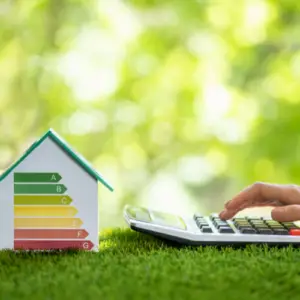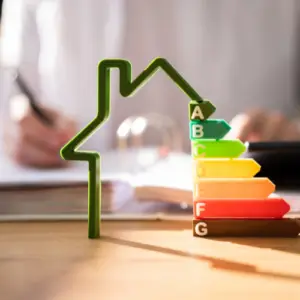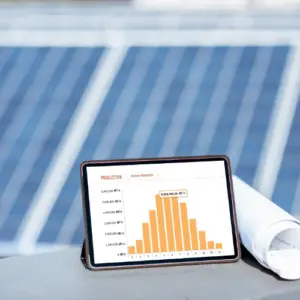INTRO
Wondering how many solar panels you’ll need to power your home? Figuring this out might seem daunting, but it’s easier than you think! With a reliable solar panel calculator, you can estimate the perfect number of panels based on your energy consumption, home size, and location in the US. Let’s dive into the details to help you plan your solar system effectively in 2024.
Why Do I Need a Solar Panel Calculator?
Solar panel calculators are essential tools for determining the right system size for your energy needs. Without accurate planning, you risk either over-sizing, which increases costs unnecessarily, or under-sizing, which leads to insufficient energy production.
Key Factors a Solar Panel Calculator Considers
- Energy Usage: Your household’s monthly kilowatt-hour (kWh) consumption.
- Sunlight Availability: How much direct sunlight your region receives.
- Panel Efficiency: The output capacity of your chosen solar panels.
Factors That Affect the Number of Solar Panels I Need
1. Energy Consumption
The more energy your home consumes, the more panels you’ll need. On average, a US household consumes around 877 kWh per month. Your electricity bill can provide this data, helping you input precise figures into the calculator.
2. Solar Panel Efficiency
Modern solar panels convert about 15–22% of sunlight into usable energy. Higher efficiency panels require fewer units to meet your energy needs.
3. Geographic Location
Homes in sunnier states like California or Arizona need fewer panels compared to those in cloudier areas like Washington or New York. Regional sunlight availability plays a crucial role in determining the system size.
How to Use a Solar Panel Calculator
Using a solar panel calculator is straightforward and helps you understand your energy requirements quickly.
Step-by-Step Guide
- Enter Your Energy Usage: Use your monthly or annual kWh consumption from your utility bill.
- Select Your Location: The calculator factors in average sunlight hours based on your ZIP code.
- Choose Panel Efficiency: Input the efficiency rating of the panels you’re considering.
Example Calculation
If your home uses 1,000 kWh per month in a region with 5 peak sunlight hours per day, and you choose panels with a 350-watt output:
- Daily Energy Need = 1,000 kWh ÷ 30 days = ~33.33 kWh/day
- Panels Required = (33.33 kWh/day) ÷ (5 sunlight hours × 0.35 kW/panel) = ~19 panels
Energy Consumption: How Much Power Do I Use?
Understanding your home’s energy consumption is the first step in planning a solar system.
Tools to Measure Energy Usage
- Smart Meters: Monitor real-time electricity usage.
- Energy Monitors: Devices that track and report power consumption.
- Utility Bills: Provide historical data on your energy habits.
Solar Panel Efficiency and Sizing
Not all panels are created equal. Panel efficiency directly influences how many panels you’ll need.
Popular Panel Options
- Monocrystalline Panels: High efficiency (15-22%), requiring fewer panels.
- Polycrystalline Panels: Moderate efficiency (13-16%), more budget-friendly.
- Thin-Film Panels: Lightweight but less efficient (10-12%).
Geographic Impact on Solar Panel Needs
Your location plays a critical role in determining the number of panels required.
Sunlight Hours Across the US
- High Sunlight States: California, Arizona, Nevada (6-8 peak sunlight hours/day).
- Moderate Sunlight States: Texas, Florida, Maryland (4-6 peak sunlight hours/day).
- Low Sunlight States: Washington, New York, Alaska (2-4 peak sunlight hours/day).
Seasonal Variations
- Longer daylight in summer boosts energy production.
- Shorter winter days may require a larger system to compensate.
Cost Savings with the Right Number of Panels
A properly sized solar system maximizes savings and shortens the time to recoup your investment.
Avoiding Over-Sizing
- Unused energy increases costs unnecessarily.
- Smaller systems may suffice with energy-efficient habits.
ROI for Solar Systems
- Most homeowners recover their investment in 7-10 years.
- Federal and state incentives can reduce upfront costs significantly.
DIY Solar Panel Calculations vs. Professional Assessments
DIY Benefits
- Quick and free estimation using online calculators.
- Provides a starting point for planning.
Why Hire a Professional?
- Detailed analysis considers shading, roof angle, and local regulations.
- Guarantees accurate sizing to meet your energy goals.
Success Stories: Solar System Installations in the US
“The solar panel calculator was a game-changer for us. It helped us size our system perfectly, saving us thousands!” — John P., Phoenix, AZ
“I was amazed at how easy it was to plan our solar panels. The calculator showed exactly how much we could save.” — Emma R., Dallas, TX
“Using a professional for final sizing ensured our panels matched our energy needs perfectly.” — Lucas S., Boston, MA
Did You Know?
Did you know the efficiency of solar panels has improved by over 40% in the last decade? Modern panels generate more energy in less space, making them ideal for rooftops of all sizes.
Common Mistakes When Sizing Solar Panels
Avoid These Errors
- Skipping a Calculator: Leads to inaccurate system sizing.
- Ignoring Future Energy Needs: If you plan to add appliances or an electric vehicle, account for increased consumption.
Tips for Success
- Use reliable calculators and compare estimates.
- Consult professionals to refine your plans.
TL;DR Summary of Solar Panel Sizing in the US
- Use a solar panel calculator to estimate how many panels you need based on energy usage, panel efficiency, and location.
- Higher efficiency panels reduce the total number required.
- Professional assessments ensure accurate sizing and compliance.
FAQs
How does a solar panel calculator work?
It estimates the number of panels needed based on energy usage, sunlight hours, and panel efficiency.What information do I need for solar panel calculations?
Your monthly energy usage, location, and the type of panels you plan to install.Can I size my solar panels without professional help?
A calculator provides a great estimate, but professional assessments ensure precise results.How does location affect the number of panels I need?
Regions with more sunlight require fewer panels to meet the same energy needs.What’s the average cost of a solar system in the US?
The average residential system costs between $15,000 and $25,000 before incentives, varying by size and location.